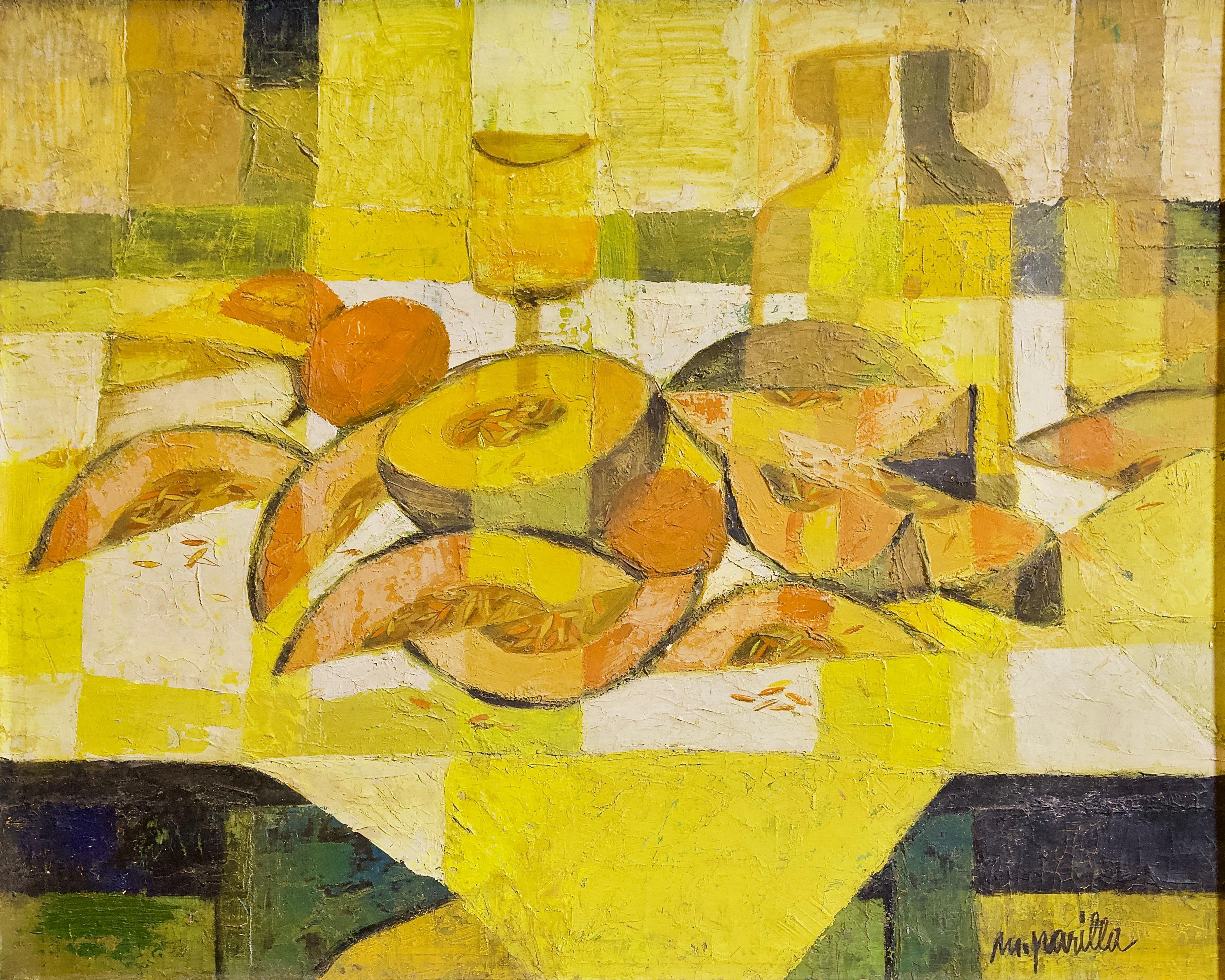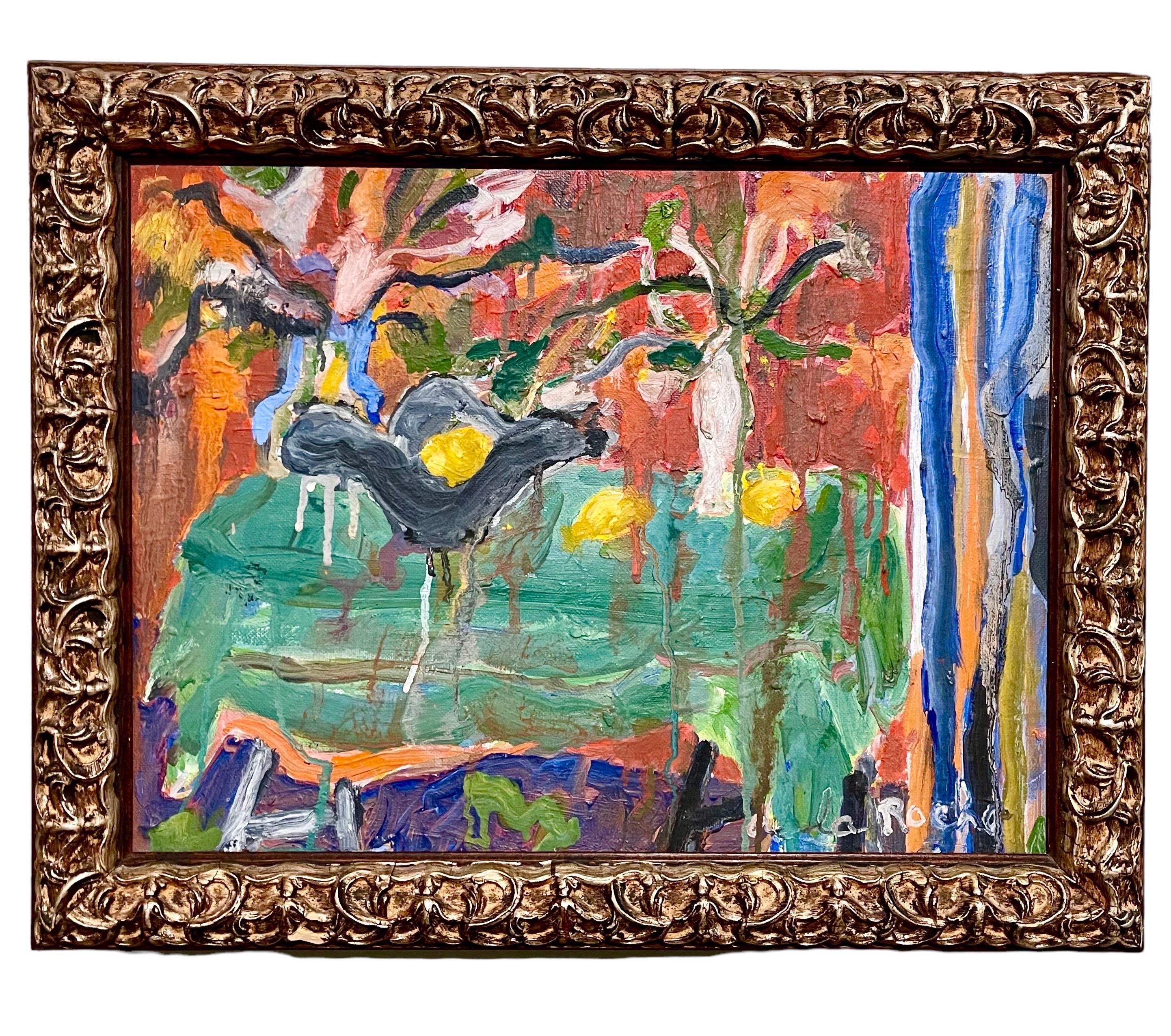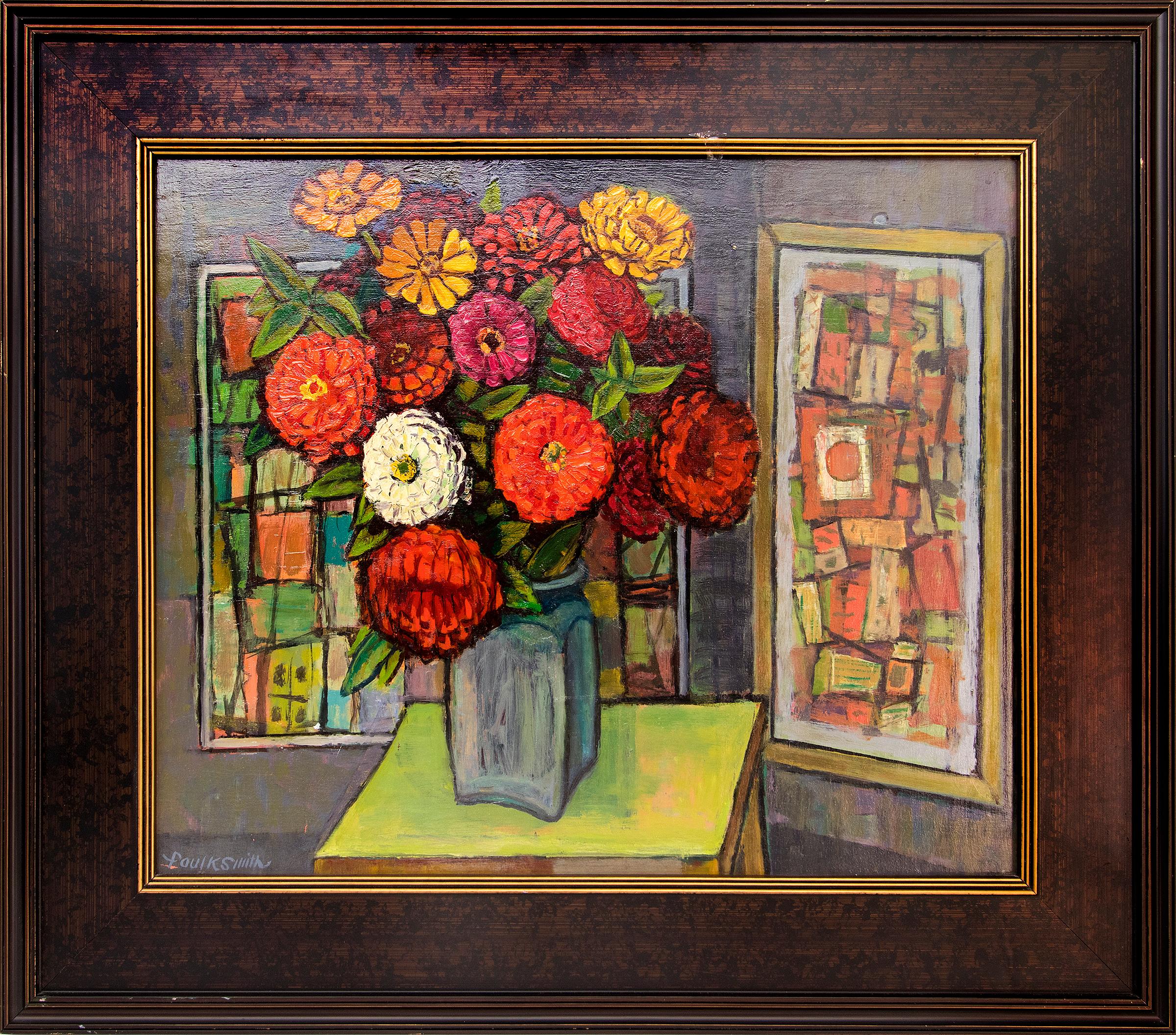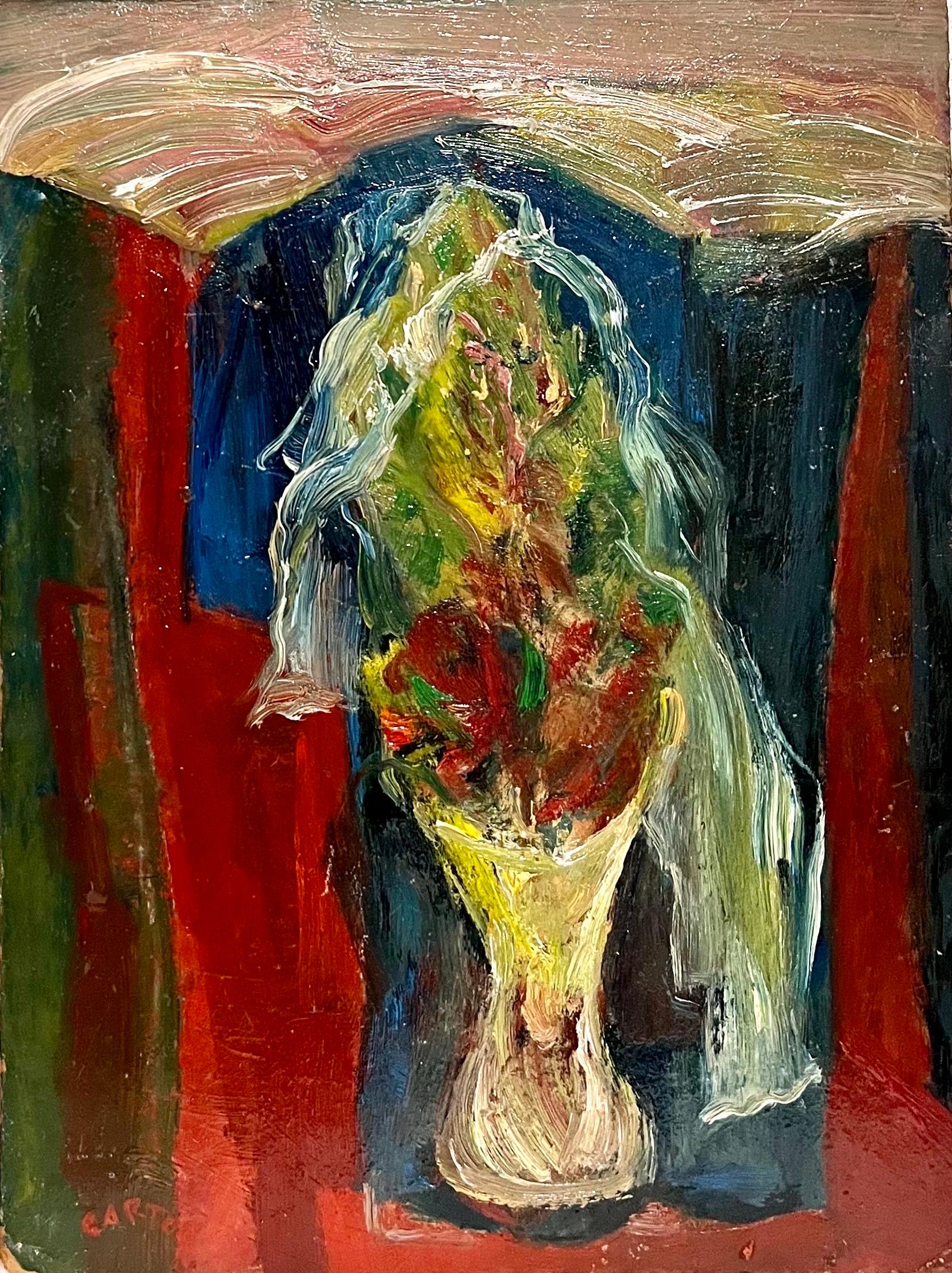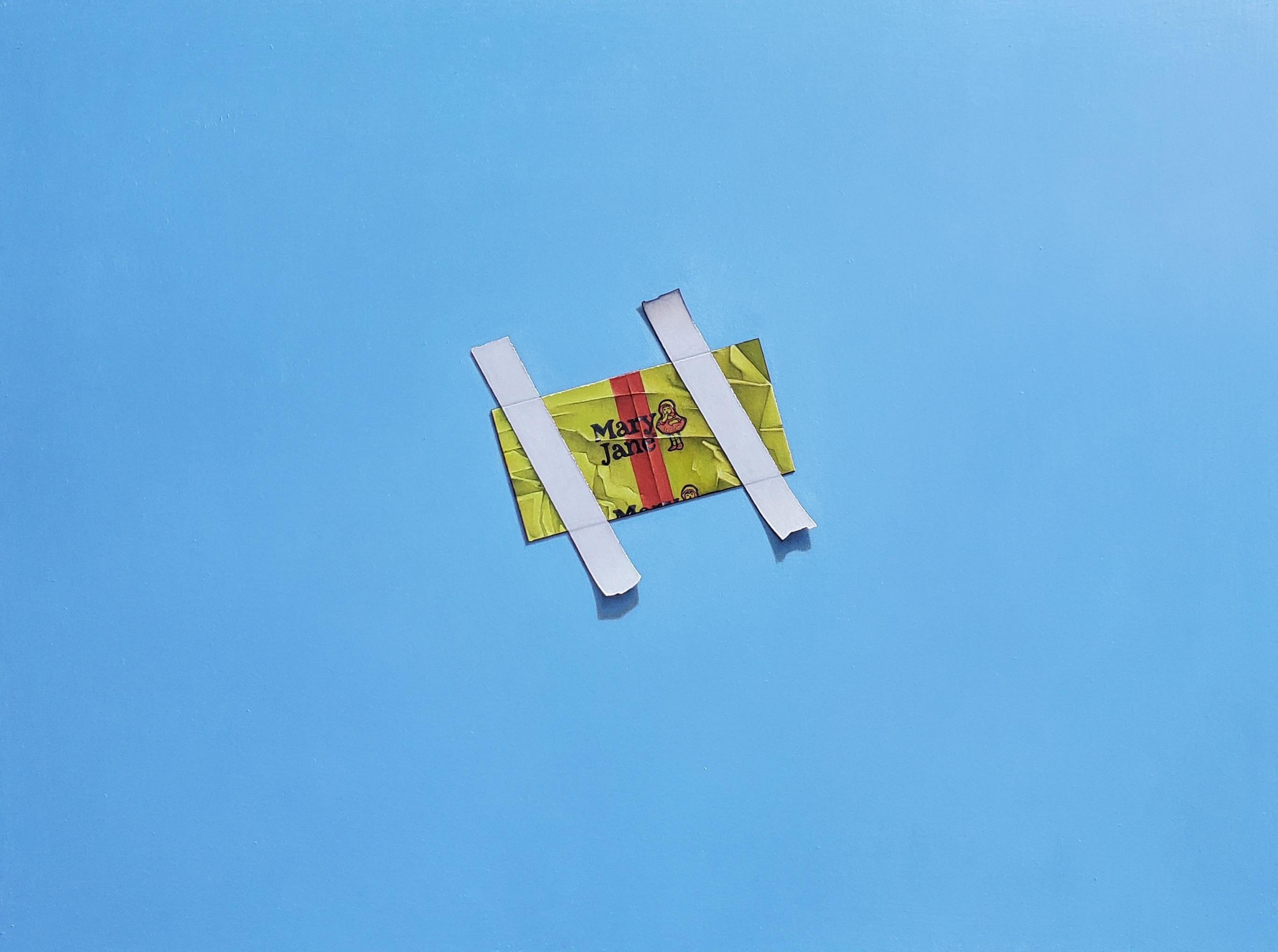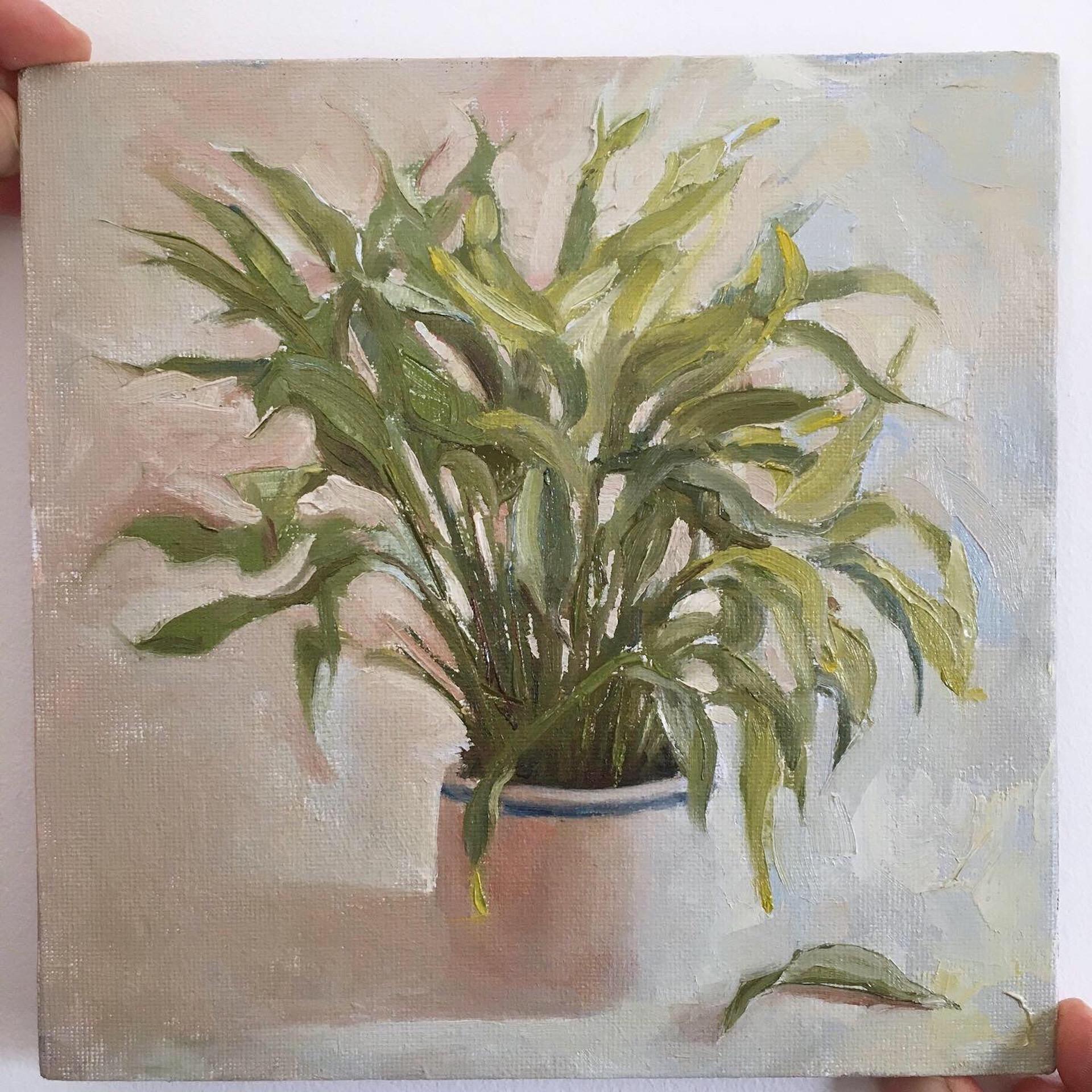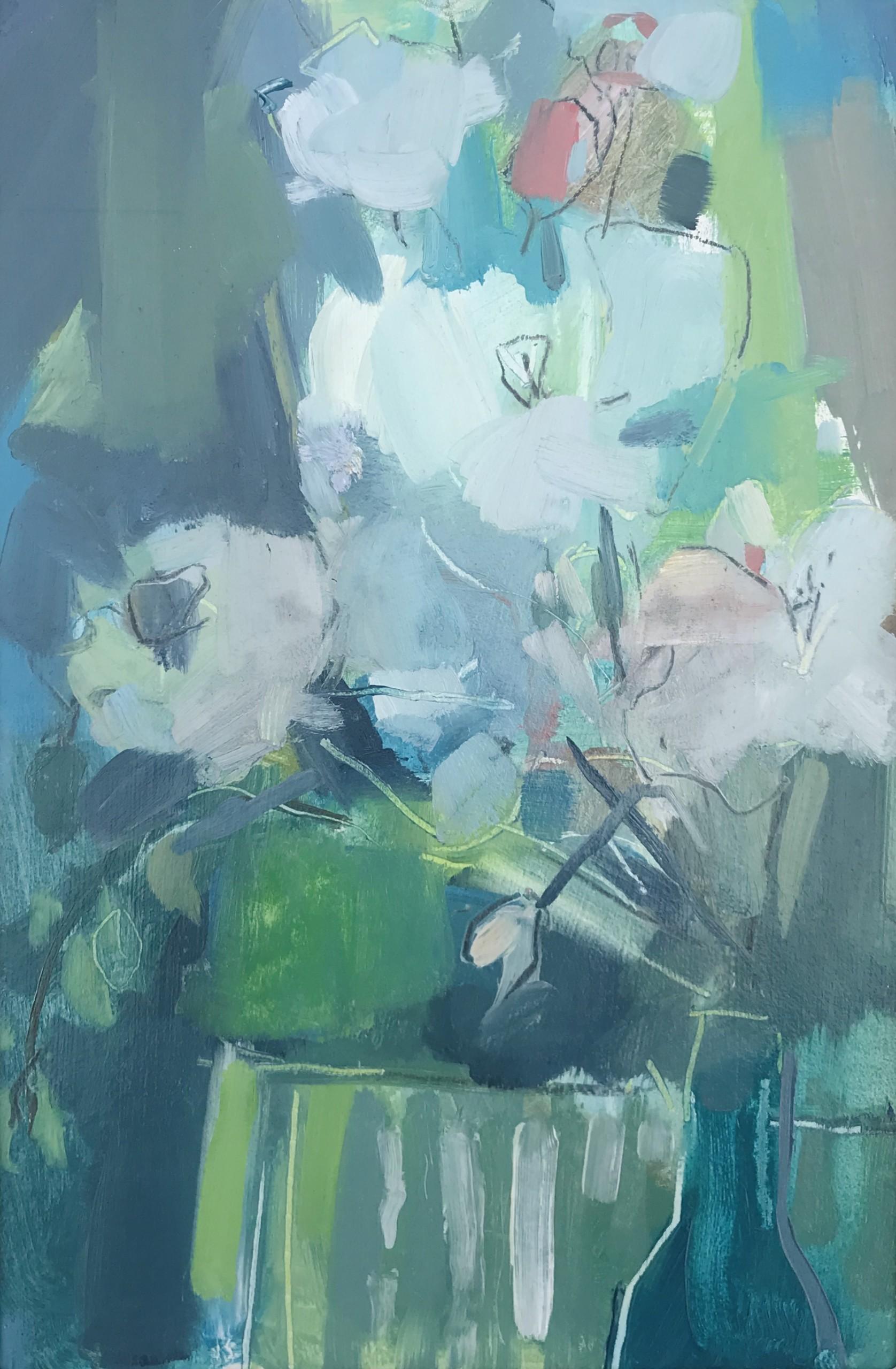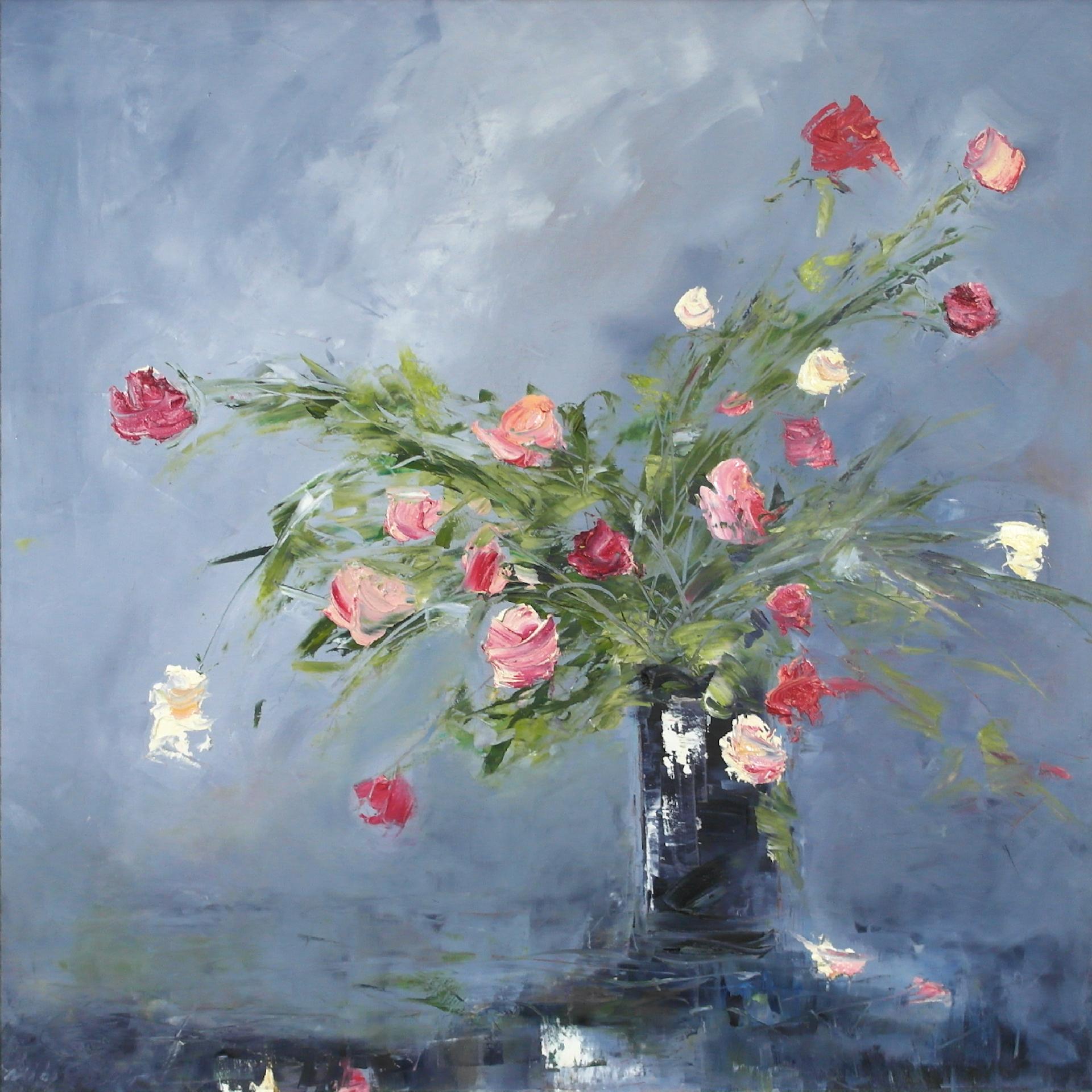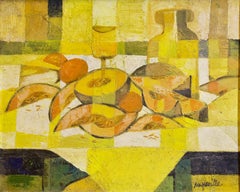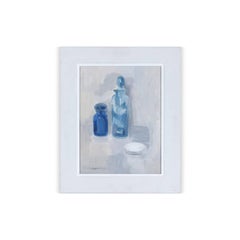
Blue Glass by Margaret Firth
View Similar Items
1 of 7
Margaret FirthBlue Glass by Margaret Firth
About the Item
- Creator:Margaret Firth (1898 - 1991, British)
- Dimensions:Height: 17.92 in (45.5 cm)Width: 14.77 in (37.5 cm)Depth: 0.99 in (2.5 cm)
- Medium:
- Period:
- Condition:
- Gallery Location:York, GB
- Reference Number:1stDibs: LU79412342901
You May Also Like
- Abstract Expressionist Floral ExplosionBy Allie William SkeltonLocated in Soquel, CABright and expressive abstract painting of flowers by Allie Bill Skelton (American, 1942-1986). This piece is unsigned, but was acquired with a collection of other Allie "Bill" Skelton works. Unframed. Image, 12”H x 9”W, oil on artists canvas board. Allie William “Bill” Skelton (American, 1942-1986) was a painter and sculptor active in San Francisco who was involved in the gay art...Category
1980s Abstract Expressionist Abstract Paintings
MaterialsCanvas, Oil, Cardboard
$348 Sale Price20% Off - Decorative, Abstract Oil Painting, Cubic Still Life, with Honeydew Melons.Located in Berlin, DEHighly Decorative, Abstract Oil Painting, Still Life with Honeydew Melons. The painting was most likely made in the USA. (See reverse side, manufacturer of the cardboard). Signed. U...Category
20th Century Cubist Abstract Paintings
MaterialsOil, Cardboard
$4,379 Sale Price20% OffFree Shipping - California Fauvist Oil Painting Carmel Bohemian Expressionist Lemons & FlowersBy Janet Ament De La RocheLocated in Surfside, FLJANET AMENT DE LA ROCHE (American 1916-2000) "Still Life of Table with Lemons and Vase of Flowers," Oil painting on canvas wrapped board in carved gilt wood frame Hand signed L/R, "de la Roche," and signed verso Provenance: Private Collection, Pearland, Texas. Dimensions: framed 15 X 19.5 sight 12 X 16 Janet Ament De La Roche (1916-2000) was active/lived in California. She is known for Post impressionist, abstract figurative painting. This painting while clearly figurative bears the influence of the emerging Abstract expressionist movement. Janet Ament De La Roche was born in Hollywood, CA on December 31, 1916. Janet first studied in Los Angeles at Otis and Chouinard art institutes. While studying at Jepson Art Institute in 1947, she met and soon married artist, Victor Di Gesu. Janet de La Roche was often called one of the last Bohemians. She was an artist as well as an avid Flamenco dancer. The couple spent four years in Europe and further studied in Paris at Académie de la Grande Chaumière and Andre Lhote Institute, and in Barcelona at Escuela de Bellas Artes de San Jorge .She also studied with the artist, Ejnar Hansen. as well as with Earl Kerkam, Yves Brayer, Jean Aujame, Edouard Goerg, F.Tolles Chamberlin and George Stanley. Upon returning to California in 1956, they settled on the Monterey Peninsula and built a home in Pacific Grove. She exhibited widely and with much success, including at the Salon d'Automne (1954), the Salon des Artes Decoratifs, Museum of Modern Art, Paris, (1955), the San Francisco Museum of Modern Art and the Los Angeles County Museum of Art. She was the winner of the Prix Othon Friesz. She was included in the exhibit at the Pacific Grove Art Center, A Salute to 14 Major Artists, (Other “Legacy” artists include, Janet Ament, Carolyn berry, Joan Savo, Justine Weber, Virginia Conroy, George Degroat, Eldon Dedini, Sam Colburn, Alex Gonzalez...Category
Mid-20th Century Fauvist Still-life Paintings
MaterialsOil, Board
- American Modernist Abstract Still Life Painting with Zinnia Flowers, Red OrangeLocated in Denver, COOil on board painting by Paul Kauvar Smith (1893-1977) of a still life of flowers on a table in an interior scene with a mirror in the background. American Modernist still life painting with zinnias and abstract paintings in an artists studio. Presented framed, outer dimensions measure 27 ⅝ x 31 ¾ x 1 ⅛ inches. Image size is 19 ½ x 23 ½ inches. Painting is clean and in very good vintage condition - please contact us for a detailed condition report. Provenance: Private collection, Denver, Colorado Expedited and international shipping is available - please contact us for a quote. About the Artist: In 1915, Paul Kauver Smith studied commercial art and design at the St. Louis School of Fine Art for two years. His studies were interrupted by World War I during which he served as a corporal in the U.S. Army. After the war he returned to the School of Fine Art and also studied at the Washington University School of Fine Arts in St. Louis with Fred G. Carpenter, himself a student of Jean-Paul Laurens at the Colarossi Academy in Paris. Carpenter was known as a marvelous colorist who "thought every inch of a painting should be fascinating…and should be as interesting close up as from a distance." His approach is reflected in many of Smith’s paintings, both representational and abstract in style, done later in Colorado. In 1921, Smith relocated to Denver where he studied for two years at the Denver Academy of Fine and Applied Arts, formerly located in Brinton Terrace on 18th Street in Denver’s Capitol Hill neighborhood. His teacher was John E. Thompson, another important influence as a pioneer of modernism in Denver. The Academy hired Smith as an instructor in 1923 and that same year the Denver Art Museum included his work for the first time in its 29th annual juried exhibition. He later had two solo shows at the museum, which added his work to its Anne Evans Collection. In 1959 the museum reproduced Houses at Victor, for its Western Heritage Exhibition catalog. During the year of 1928 he witnessed the Articles of Incorporation of the Denver Artists Guild, comprising most of the city’s professional artists. He also belonged to the American Artists Professional League, also organized in 1928 by fifteen members of the Salmagundi Club in New York to protect artists’ interest and promote traditional American art. He was one of some two dozen Colorado artists designated to participate in the Public Works of Art Program (PWAP, 1933-34), the first federally-sponsored program for artists during the Great Depression. Around 1928 Smith became the "Hermit of Stuart Street," and remained a life-long bachelor. One painting, View from My Window, depicts his immediate neighborhood. Living for more than thirty years at 1039 Stuart Street in West Denver, he gave up creature comforts that most people take for granted to have the freedom to devote his life to the pursuit of art. In the first twenty-five years of his career, his paintings focused on the Colorado landscape and its mining towns with their decaying buildings as relics of the past. His piece, Miner’s House at Victor, Colorado illustrates the description of his work in this genre as described by Denver artist and art writer, Arneill Downs, "The jewel-like shapes and colors the artist uses gives the most decrepit objects style. The decaying buildings of ghost towns, grouped together on canvas, glow like a patchwork quilt." Smith described his technique as "I start lean and finish fat." He worked first with turpentine as a medium and ended up with pure pigment put on with a palette knife. In addition to Colorado scenes...Category
20th Century Abstract Still-life Paintings
MaterialsOil, Board
$3,935 Sale Price25% Off - American Abstract Expressionist Flowers Oil Painting Norman Carton WPA ArtistBy Norman CartonLocated in Surfside, FLNorman Carton (1908 – 1980) was an American artist and educator known for abstract expressionist art. He was born in the Ukraine region of Imperial Russia and moved to the United States in 1922 where he spent most of his adult life. A classically trained portrait and landscape artist, Carton also worked as a drafter, newspaper illustrator, muralist, theater set designer, photographer, and fabric designer and spent most of his mature life as an art educator. Carton showed in and continues to be shown in many solo and group exhibitions. His work is included in numerous museums and private collections throughout the world. Norman Carton was born in the Dnieper Ukraine territory of the Russian Empire in 1908. Escaping the turbulence of civil war massacres, he settled in Philadelphia in 1922 after years of constant flight. While attending the Pennsylvania Museum School of Industrial Art, Carton worked as a newspaper artist for the Philadelphia Record from 1928 to 1930 in the company of other illustrator/artists who had founded the Ashcan School, the beginnings of modern American art. From 1930 to 1935, he studied at the Pennsylvania Academy of Fine Arts under Henry McCarter, who was a pupil of Toulouse-Lautrec, Puvis de Chavanne, and Thomas Eakins. Arthur Carles, especially with his sense of color, and the architect John Harbison also provided tutelage and inspiration. Following his time at the Pennsylvania Academy of Fine Arts, Carton studied at the Barnes Foundation from 1935 to 1936 where he was influenced by an intellectual climate led by visiting lecturers John Dewey and Bertrand Russell as well as daily access to Albert C. Barnes and his art collection. Carton was awarded the Cresson Traveling Scholarship in 1934 which allowed him to travel through Europe and study in Paris. There he expanded his artistic horizons with influences stemming from Henri Matisse, Pablo Picasso, Chaim Soutine, and Wassily Kandinsky. While at the Pennsylvania Academy of Fine Arts, Carton was also awarded the Toppan Prize for figure painting as well as the Thouron Composition Prize. He received numerous commissions as a portrait artist, social realist, sculptor, and theatrical stage designer as well as academic scholarships. During this time, Carton worked as a scenery designer at Sparks Scenic Studios, a drafter at the Philadelphia Enameling Works, and a fine art lithographer. From 1939 to 1942, the Works Progress Administration (WPA) Federal Art Project employed Carton as a muralist and easel artist. He collaborated with architect George Howe. The WPA commissioned Carton to paint major murals at the Helen Fleischer Vocational School for Girls in Philadelphia, the Officers’ Club at Camp Meade Army Base in Maryland, and in the city of Hidalgo, Mexico. Throughout the 1940s, Carton exhibited and won prizes for his semi-abstract Expressionist and Surrealist paintings. He socialized with and was inspired by Émile Gauguin and Fernand Leger. During World War II, Carton was a naval structural designer and draftsman at the Cramps...Category
Mid-20th Century Abstract Expressionist Still-life Paintings
MaterialsOil, Board
- "Still Life of Fruits", 20th Century Oil on Cardboard by Artist Francisco BoresBy Francisco BoresLocated in Madrid, ESFRANCISCO BORES Spanish, 1898 - 1972 STILL LIFE OF FRUITS signed "Borès 45´" (lower right) oil on cardboard 15-3/4 x 19-3/4 (40 x 50 cm.) framed: 18-1/4 x 22-1/8 inches (46 x 56 cm.) PROVENANCE Private French Collector Francisco Bores López (Madrid, May 5, 1898 - Paris, May 10, 1972) was a Spanish painter of the so-called New School of Paris. His artistic training originated both in the Cecilio Pla painting academy, where he met Pancho Cossío, Manuel Ángeles Ortiz or Joaquín Peinado...Category
1940s Abstract Geometric Still-life Paintings
MaterialsOil, Cardboard

